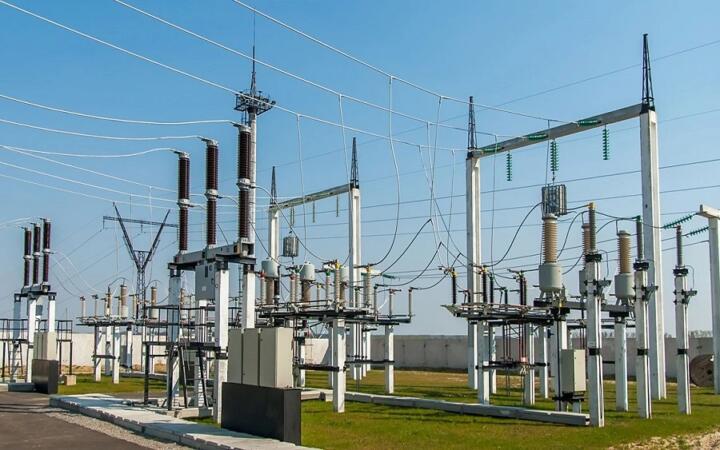The Federal Government has unveiled an ambitious plan to increase Nigeria’s electricity output by 8,500 megawatts (MW) within the next twelve months. If achieved, the expansion would mark a significant breakthrough in addressing the chronic power shortfall that continues to undermine economic growth and public welfare across the country.
Under the initiative announced by the Minister of Power, the government intends to drive rapid scale-up through a combination of new generation facilities, optimization of existing assets, and enhanced private sector engagement. At present, Nigeria’s actual output fluctuates between 4,000 and 5,000 MW—far below both current demand and the 8,000 MW-plus requirements of major industrial clusters. Meeting the 8,500 MW target would nearly double national supply and provide a foundation for broader economic transformation.

The proposed strategy leverages multiple delivery channels. Large-scale gas‑fired plants scattered across the Niger Delta and North‑Central regions are slated for completion or phased activation. At the same time, scattered mini-grid and renewable energy projects—fueled by solar, wind, and hydro resources—are slated for expansion under public‑private and donor‑financed schemes. This multifaceted expansion is intended to spread the power mix and enhance supply resilience.
Meanwhile, ambitious performance targets have been set for existing generation and transmission companies. These include improvements in plant availability, reduced technical losses, proactive grid maintenance, and faster turnaround on gas supply disruptions. The government has also mandated that embedded private generation—including captive power from large industrial players—be pooled into the national grid under an emergency dispatch framework, allowing surplus generation to serve local communities.
Financing remains central to the effort. The government is collaborating with multilateral development agencies, private equity investors, and export credit institutions to mobilize over a billion dollars in infrastructure financing. Concession arrangements are being structured to attract independent power producers (IPPs) under transparent tariff regimes. Officials at the Federal Ministry expressed confidence that the enhanced investment climate—bolstered by a unified foreign exchange rate, strengthened regulatory environment, and improved revenue collection—would favor timely project delivery.
The new output target also comes with regulatory reforms. The Nigerian Electricity Regulatory Commission (NERC) is working to accelerate licencing approvals for new power projects, fast-track tariff registration processes, and standardize power purchase agreements. At the same time, the government is encouraging utilities to adopt smart metering and time-of-use pricing to improve revenue resilience and incentivize consumption shifts.
Efforts to expand generation capacity are being complemented by measures on transmission and distribution. Planned upgrades span major transmission corridors, including bulk supply switching stations, upgraded substations, and expanded high-voltage lines linking power-rich zones to load centers. The Transmission Company of Nigeria (TCN) has set productivity milestones tied to reduced bottlenecks and higher throughput. Distribution companies are simultaneously under pressure to refine grid networks, reduce feeder-level losses, and improve customer metering.
Seeking to ensure progress is systemic, a new implementation task force has been established, chaired by the office of the Vice President. The task force includes representatives from power ministries, regulatory bodies, energy agencies, investor groups, and technical consultants. It will meet monthly to monitor milestones, identify bottlenecks, and coordinate swift crisis interventions—such as mobilizing alternate gas sources during supply disruptions or reallocating dispatch schedules during weak grid performance periods.
Public and private stakeholders have welcomed the initiative, while cautioning that timelines remain tight. Analysts note that historical projects often faced delays due to financing gaps, rights-of-way obstruction, fuel supply disruptions, and equipment procurement challenges. To counter these risks, government officials have announced support for reprofiling diesel-to-gas conversion timelines, enhancing sector insurance mechanisms, and fast-tracking regulatory waivers where necessary.
Civil society actors emphasized the importance of integrating low-income and rural communities into the energy expansion plan. They urge the government and private players to ensure that distributed mini-grid and off-grid projects accompany central generation drives—particularly in regions with poor grid access. The Ministry of Power has responded by pledging to link projects in off-grid zones with broader electrification frameworks, exploring grants and concessional financing for remote areas.
Employment implications are also emerging. Analysts estimate that constructing new plants and upgrading transmission-distribution infrastructure will generate tens of thousands of direct jobs—ranging from skilled engineers to construction labourers. This public‑private energy mobilization could help address youth unemployment while strengthening community relations around high-impact energy investments.
In terms of economic impact, the scale-up could reduce reliance on diesel or solar-powered generators—currently estimated to cost the economy billions annually—and lower operating costs for factories, schools, hospitals, and businesses. Reliable electricity is expected to attract foreign direct investment, boost local manufacturing, and create incentives for small and medium enterprises to scale operations.
Key challenges remain, especially the gas supply shortfall. Several power stations have remained idle for months due to irregular gas deliveries. The government intends to fast-track gas infrastructure investments—including pipeline expansion, compress-and-lift projects, and route reactivation—to mitigate this constraint. Plans are also underway to procure gas from neighboring countries under short‑term regional agreements, as a contingency to minimize disruption.
Internal reform is also underscored. The plan calls for transparent performance reporting, strengthened audit mechanisms, and enhanced professional capacity through technical training. Oversight bodies have pledged to monitor compliance and enforce punitive measures for project delays or non-performance by contractors and licensees.
As Nigeria embarks on this aggressive path toward one of the most significant power sector expansions in its history, stakeholders remain watchful. Should the 8,500 MW target be met, it could signal a turning point—ushering in a new era where electricity access supports inclusive growth, improves living standards, and reshapes the trajectory of Africa’s largest economy.
However, execution will be the true test. Achieving such a steep increase within twelve months requires tight coordination, unyielding commitment, and rapid decision-making. If the Federal Government delivers on this pledge, Nigeria would not only reduce power deficits—but may open the door to a future powered by ambition, not outages.
Support InfoStride News' Credible Journalism: Only credible journalism can guarantee a fair, accountable and transparent society, including democracy and government. It involves a lot of efforts and money. We need your support. Click here to Donate
